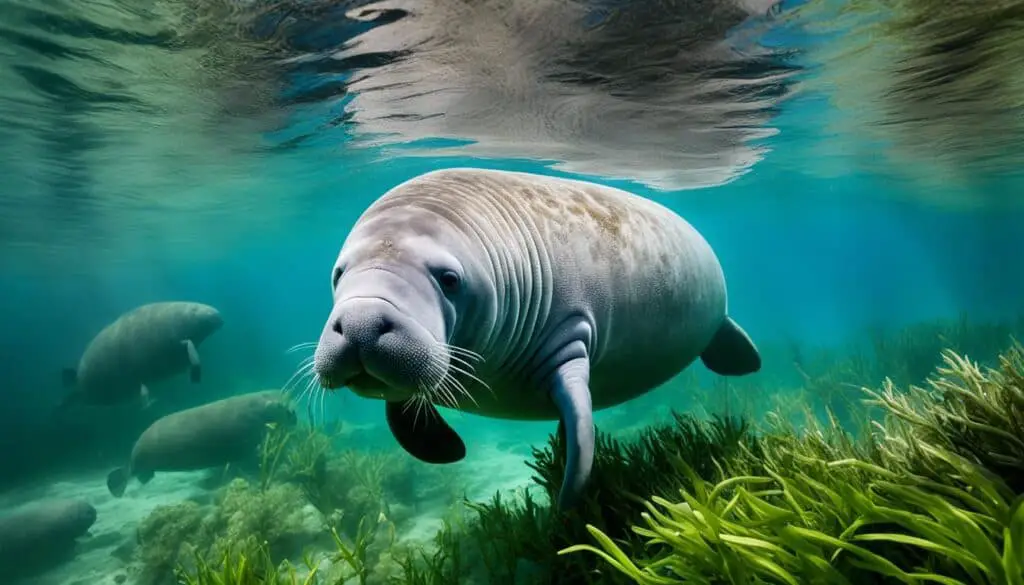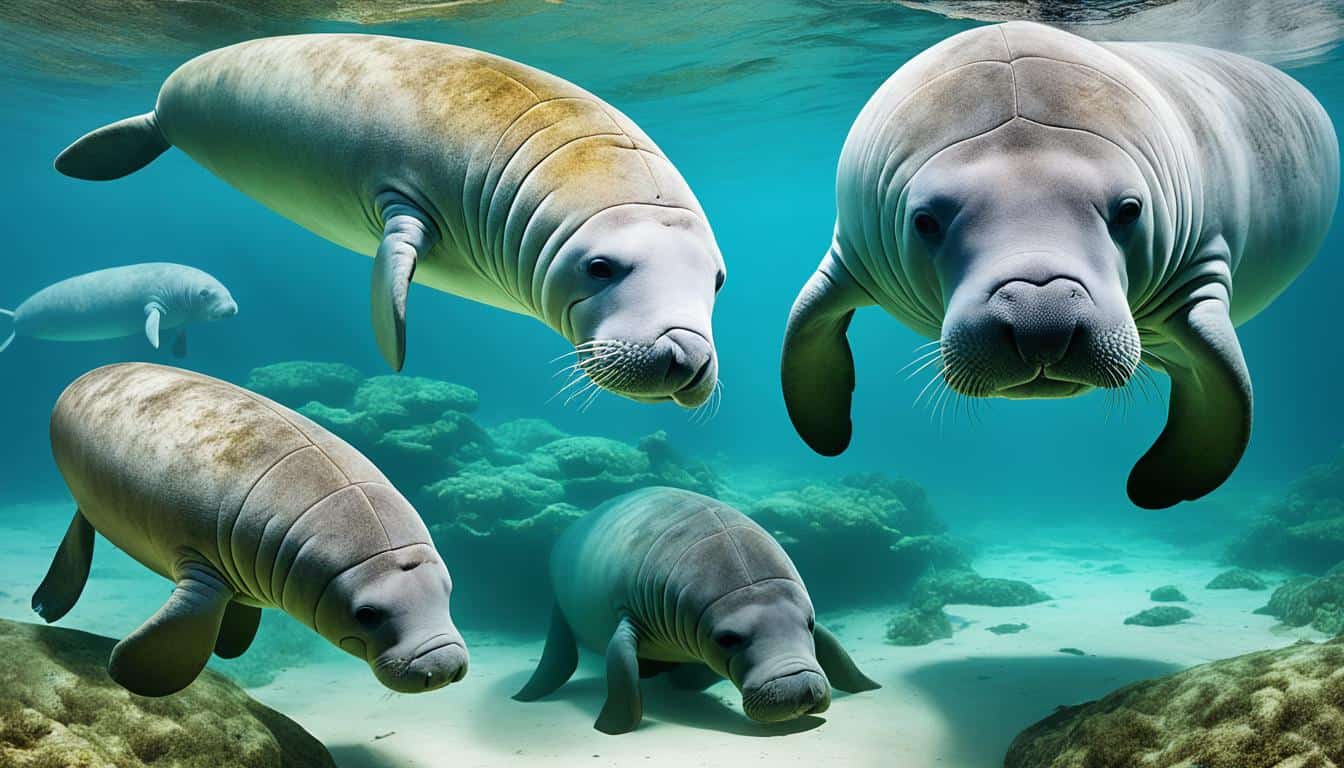Learning about manatees’ lifespans is key to understanding their role in nature and how to protect them. You might ask, how long do manatees live? These amazing animals can live a long time, up to 50 to 60 years in the wild. In captivity, they can live even longer, with a record of 69 years for one manatee. Let’s look at what affects their lifespan to see the challenges they face in the wild.
Understanding Manatee Lifespan
To understand manatee lifespan, we must look at several key factors. The manatee age shows not just years lived but also health and environment. In the wild, manatees can live up to 60 years, showing a long manatee life expectancy in good habitats.
Many things affect how long manatees live and their overall health. Good nutrition is key. Well-fed manatees grow healthier and live longer. Genetics also play a part in how long manatees live.
Where manatees live affects their survival. They move to better places for food and safety. Sadly, humans harm their homes more than nature, making conservation vital.
How Long Do Manatees Live?
Many people ask, “How long do manatees live?” They want to know the answer for both wild and captive manatees. This question helps us understand how these gentle giants age and the challenges they face.
Average Lifespan in the Wild
In the wild, manatees usually live for 50 to 60 years. Sadly, not all reach this age due to threats. Boats, damaged habitats, and pollution are big dangers for them.
Lifespan in Captivity
But, manatees in captivity live much longer. They have a safe place, no predators, and plenty of food. This care lets them live over 65 years. The oldest manatee, Snooty, lived to be 69 years old, showing the benefits of living in captivity.
| Environment | Average Lifespan | Notable Record |
|---|---|---|
| Wild | 50-60 years | N/A |
| Captivity | 65+ years | Snooty: 69 years |
Factors Affecting Manatee Longevity
Understanding what affects manatee longevity is key to saving these gentle sea creatures. Both nature and human actions play big roles in how long manatees can live.
Natural Threats
Natural threats to manatees are fewer than human threats. But, they still face dangers from diseases and stress in their environment. For example, they need water over 68 degrees Fahrenheit to stay healthy. Cold water can make them sick and shorten their lives.
Human Impacts
Human actions are a bigger threat to manatees. Boats hitting manatees can cause serious injuries. Pollution and losing their homes to cities also harm them.
Common human impacts include:
- Physical injuries from watercraft.
- Entanglement in fishing gear.
- Ingestion of toxic substances from polluted environments.

| Type of Threat | Description | Impact on Manatee Longevity |
|---|---|---|
| Natural Threats | Cold stress and diseases | Can shorten lifespan if extreme conditions occur |
| Human Threats | Boat collisions and pollution | Severe injuries and health issues that can lead to death |
| Habitat Loss | Urban development and contamination | Reduces available areas for feeding and breeding |
We need to protect manatees by understanding these threats. Supporting safe boating and clean waterways helps manatees live longer.
Manatee Aging Process
The manatee aging process includes many physical and behavioral changes. These changes help us understand how these gentle giants grow and live. As they get older, manatees show signs like worn teeth and different skin texture. These signs are important for researchers and those working to save manatees.
Physical Changes Over Time
Over the years, manatees change a lot in appearance. Older manatees have rougher skin and fewer scars, showing how their environment affects them. Their teeth also change, becoming more worn as they age. These changes help us understand the manatee’s life cycle and how we can help them.
Behavioral Changes with Age
Manatees also change how they act as they get older. Older manatees rest more and may prefer to be alone. This shows they have less energy and need good places to live. Knowing how manatees change helps conservationists protect their homes and keep their communities healthy.
FAQ
How long do manatees typically live in the wild?
Manatees usually live about 50 to 60 years in the wild. However, many don’t make it that far because of threats.
What is the longest recorded lifespan of a manatee?
The longest life recorded for a manatee is 69 years. This was for a manatee named Snooty who lived in captivity.
How does being in captivity affect a manatee’s lifespan?
Captive manatees often live longer, sometimes over 65 years. This is because they have a safe environment, plenty of food, and no predators.
What factors can impact a manatee’s longevity?
Nutrition, genetics, the quality of their home, and human threats can all affect how long manatees live.
What are the primary threats to manatees in the wild?
The main threats are boat collisions, damage to their homes, and pollution. These issues increase the death rate.
How does the aging process manifest in manatees?
As manatees age, they show physical signs like worn teeth and skin changes. They also act differently, moving less.
Why is understanding manatee longevity important for conservation?
Knowing how long manatees live is key for conservation. It helps protect older animals that add to the genetic mix and social groups.







